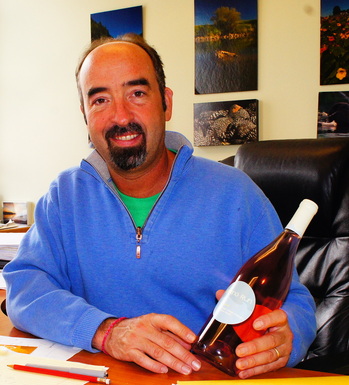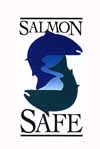 David Burger, the executive director of Stewardship Partners, a Seattle non-profit that helps landowners preserve the environment, has a fervent message for visitors, one he's been crafting for the past two decades, about sustainability, about the importance of connections between urban chefs and suburban farmers. about keeping beef cattle (contaminated with feces) out of the streams and forests, about the paramount importance of preserving forest habitat and biodiversity. Then he switches gears to explain why the urbanized western part of Washington State, especially King, Snohomish and Skagit counties, are so fertile.
David Burger, the executive director of Stewardship Partners, a Seattle non-profit that helps landowners preserve the environment, has a fervent message for visitors, one he's been crafting for the past two decades, about sustainability, about the importance of connections between urban chefs and suburban farmers. about keeping beef cattle (contaminated with feces) out of the streams and forests, about the paramount importance of preserving forest habitat and biodiversity. Then he switches gears to explain why the urbanized western part of Washington State, especially King, Snohomish and Skagit counties, are so fertile.
Sitting in Burger's downtown Seattle office, distracted by an enormous seagull perched on the windowsill, I mumbled something about yes, the minerals in the mountains, washing down from the melting Cascade snows, but no, that's not it at all. What makes the cool hillside forests and moist valleys so valuable are the streams and rivers, the Snoqualmie and Skagit especially, that run through them like lazy, crazy ribbons. And it's not about snow-pack runoff at all. It's about salmon runs going upstream.
 Salmon runs provide the region's built-in, natural fertilizer, indirectly bringing nutrients from the ocean into the trees. Salmon, as we know, are anadromous fish that return to the rivers and streams of their birth after years at sea; they all die after they spawn. Their carcasses, dense with nutrients, are carried into the forest by animals like bears and eagles. (A book documenting this phenomenon in Alaska's Tongass National Forest was titled "Salmon in the Trees.") The wildlife are not a threat to the salmon, quite the contrary: the wildlife depend on the salmon for survival, as does the entire forest ecosystem. The regular flooding of the valleys provides another way to fertilize the lowlands.
Salmon runs provide the region's built-in, natural fertilizer, indirectly bringing nutrients from the ocean into the trees. Salmon, as we know, are anadromous fish that return to the rivers and streams of their birth after years at sea; they all die after they spawn. Their carcasses, dense with nutrients, are carried into the forest by animals like bears and eagles. (A book documenting this phenomenon in Alaska's Tongass National Forest was titled "Salmon in the Trees.") The wildlife are not a threat to the salmon, quite the contrary: the wildlife depend on the salmon for survival, as does the entire forest ecosystem. The regular flooding of the valleys provides another way to fertilize the lowlands.
And yet, uncontrolled erosion and silt can easily wash into streams, covering the pebbles where salmon eggs hatch; runoff from fields treated with chemicals gets into the gravel, decreasing the survival of hatchlings. Without trees to shade the riverbanks, the water temperature rises, further threatening juvenile and adult salmon.
It's now understood that agriculture can be the scourge as well as the salvation of local rivers. In Oregon, a non-profit called Salmon-Safe was the first organization to begin working with farmers in 1996 and offering them (and dairies, wineries, orchards, ranchers) a certification of compliance with best practices of environmental stewardship. Within a few years it had expanded into Washington, where its work is administered by Stewardship Partners.
Burger has watched over the Snoqualmie Valley for two decades, starting with Tom Alberg's family property, Oxbow Farm, outside Carnation. At Stewardship Partners, he's got a who's who of the Seattle establishment behind him. Sustainable and holistic are no longer buzzwords, they're real programs; over 125 farms and several prominent vineyards (Stillwater, Conner Lee) have signed on.
How important has all this become? Just read the obituaries for Billy Frank, Jr., leader of the Nisqually Tribe, who 40-some years ago led the Native American struggle for the right to fish for salmon in Northwest rivers, a fight that culminated with the Boldt Decision granting tribes the right to take half the fish. With greater pressure on the salmon runs came greater attention to responsible stewardship; Burger's work today validates Frank's legacy.
Leave a comment